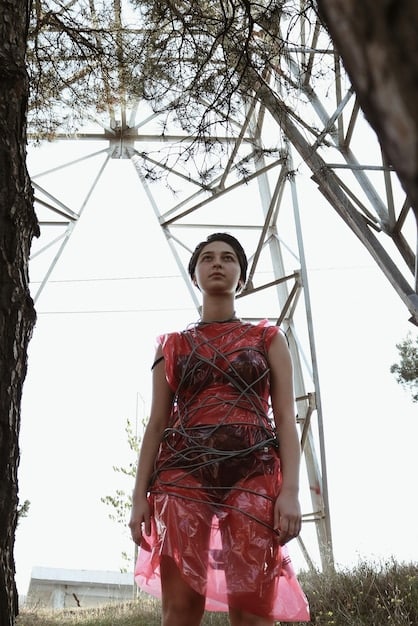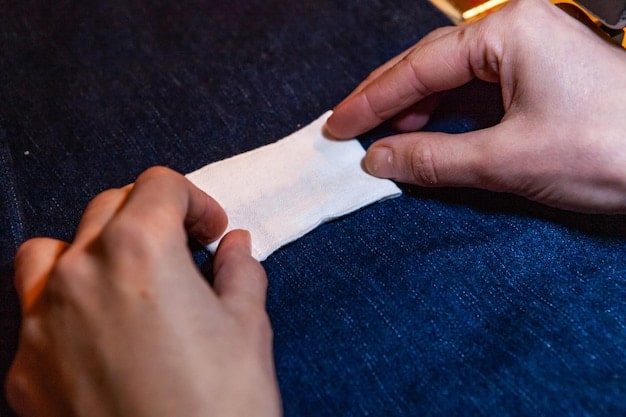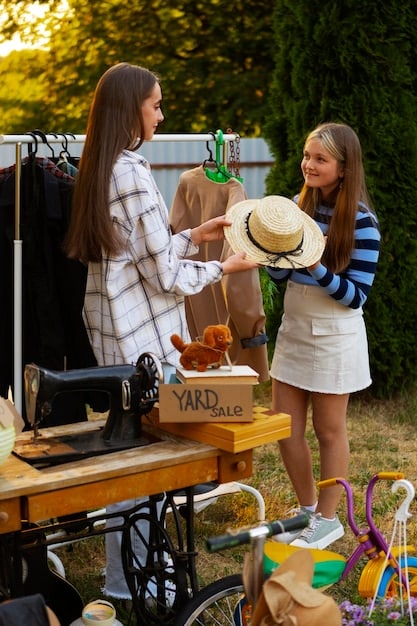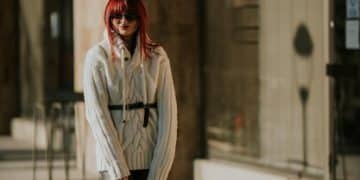Mastering DIY Underground Fashion: 3-Month Step-by-Step Guide

This step-by-step guide provides a comprehensive 3-month plan to mastering DIY underground fashion, covering everything from sourcing materials and developing design skills to branding and selling your unique creations.
Ready to dive into the world of unique, self-made style? Our 3 Months to Mastering DIY Underground Fashion: A Step-by-Step Guide will take you from novice to creator, empowering you to express your individuality and build your own fashion brand.
Month 1: Foundation and Inspiration
The first month is all about building a solid foundation. We’ll explore the core elements of underground fashion, find inspiration, and learn essential skills.
Defining Underground Fashion
Underground fashion is more than just clothing; it’s a statement. It’s about challenging mainstream trends and expressing your unique identity.
Finding Your Niche
What subculture resonates with you? Punk, Goth, Cyberpunk, or something entirely new? Defining your niche will guide your designs.
- Research different underground subcultures and their fashion styles.
- Identify what aspects of these styles appeal to you most.
- Consider your personal values and how they can be reflected in your designs.
Experiment with different styles to discover the aesthetic that best represents you. Consider the message you want to convey through your clothing.
Month 2: Skill Development and Material Sourcing
This month, we’ll focus on honing your crafting skills and finding affordable, sustainable materials that fit your vision.

Essential DIY Skills
Master basic sewing, printing, and customization techniques. These skills are the building blocks of your DIY fashion journey.
Sustainable Material Sourcing
Underground fashion often embraces sustainability. Explore thrifting, upcycling, and ethical material sources to minimize your environmental impact.
- Visit local thrift stores and flea markets for vintage clothing and fabric.
- Look for opportunities to upcycle existing clothing into new designs.
- Research ethical and sustainable fabric suppliers online.
Don’t be afraid to experiment with unconventional materials like recycled plastics or industrial scrap. The key is to be resourceful and creative with your sourcing.
This month is where your skills truly will begin to shine and expand. Do your best to experiment and give yourself plenty of chances to get it right.
Month 3: Design, Branding, and Sales
The final month is about bringing your designs to life, creating a brand, and starting to sell your creations.
Developing Your Signature Style
Translate your inspiration and skills into a cohesive design aesthetic. What makes your creations unique and recognizable?
Branding Your DIY Fashion Line
Create a brand name, logo, and marketing strategy that reflects your style and target audience. This is how you connect with customers.
- Design a logo that is memorable and reflects your brand’s aesthetic.
- Create social media accounts to showcase your designs and engage with potential customers.
- Develop a consistent brand message that communicates your values and style.
Think about your target audience and what they are looking for in underground fashion. Your branding should resonate with their interests and desires.
Marketing and Sales Strategies for Emerging Designers
Breaking into the fashion world requires more than just talent; it demands strategic marketing and effective sales techniques. Here’s how you can position yourself for success.

Leveraging Social Media
Social media is your most powerful ally. Use platforms like Instagram, TikTok, and Pinterest to showcase your designs, engage with followers, and build a community.
Effective use of social media involves staying very consistent with your uploads and interactions. Remember that an important part of your engagement should just be that.
Participating in Local Markets and Events
Local markets and fashion events provide a unique opportunity to connect with customers in person and gain direct feedback on your designs.
- Research local markets and fashion events that align with your brand’s aesthetic.
- Prepare a visually appealing display that showcases your designs in an organized and engaging way.
- Engage with customers and gather feedback on your products.
Building relationships with customers is just as important as selling your products. Use these events to create a loyal following.
Pricing, Production, and Legal Aspects
Navigating the business side of fashion can be daunting, but with the right knowledge, you can protect your interests and ensure sustainable growth.
Costing and Pricing Strategies
Calculate your production costs and set prices that are fair to both you and your customers.
Production Planning
How will you handle production as demand increases? Consider outsourcing or scaling your DIY operation.
- Estimate the time required to produce each item.
- Factor in the cost of materials, labor, and overhead expenses.
- Research industry standards for pricing similar items.
Remember, it’s better to start small and scale gradually as demand increases. This will help you avoid costly mistakes and maintain control over your production process.
Evolving, Improving, and Remaining Unique
The underground fashion industry is constantly changing, so you, too, must change.
Remaining Competitive
Keep an eye on what’s new and trendy, but still maintain your own style.
Networking
Continue expanding your DIY career through networking with other like minded fashionistos.
- Stay active on social media.
- Always be reaching out to those around you.
It’s up to you how seriously you treat your DIY work. If you want it to be a successful career, treat it that way.
| Key Area | Brief Description |
|---|---|
| 💡 Skill Development | Master basic sewing, printing, and customization techniques |
| 🌱 Material Sourcing | Explore thrifting, upcycling and other forms of sustainabe resource use. |
| 📢 Branding | Create a brand name, logo, adn marketing strategy. |
| 💸 Sales | Make and leverage your resources with social media. |
Frequently Asked Questions
Essential skills include sewing, screen printing, embroidery, and basic design. Learning to repurpose clothing with various techniques is very helpful. Practice and experimentation are key to mastering these techniques.
Thrift stores, flea markets, and online marketplaces like eBay and Craigslist offer budget-friendly options. Look for secondhand clothing, fabric scraps, and vintage materials to recycle or upcycle into your designs.
Social media platforms like Instagram, TikTok, and Pinterest are essential for showcasing your designs. Participate in local craft fairs, markets, and fashion events to reach potential customers. Networking is important, too.
Consider the cost of materials, labor, and overhead when pricing your items. Research similar items sold by other designers to determine a fair market value. Don’t underprice your work, but remain competitive.
Research copyright laws related to designs and patterns. Register your brand name and logo to protect your intellectual property. Obtain any necessary business licenses and permits to operate legally in your area. Remember to consult with local experts.
Conclusion
By following this 3-month guide, you’ll be well on your way to mastering DIY underground fashion and creating your own unique style. Embrace the process, stay creative, and never stop experimenting.





